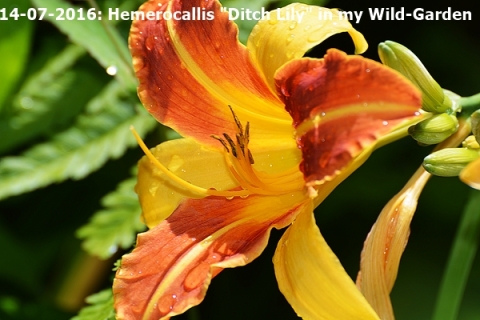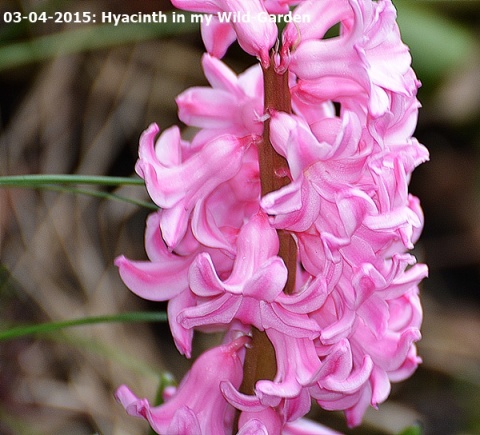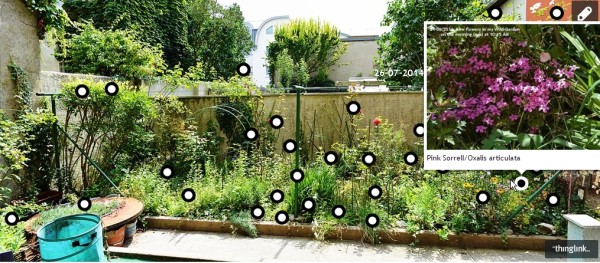.
Find below, please my BEST photos from my Wild-Garden in 2016 and will get updated as soon as there is NEW stuff 😉
.
.
Stay tuned for next photos 😉
.


.
Find below, please my BEST photos from my Wild-Garden in 2016 and will get updated as soon as there is NEW stuff 😉
.

.
.
I will propose to YOU two different marinades which I tried out recently: one marinade with honey and one marinade with “Dijon Mustard”. Both are delicious, please find below the ingredients list for both marinades:
To prepare the marinade is very easy, it will be done in 10 minutes ONLY! Take a shallow dish and bring in the following ingredients:
.
.
Mix now everything with a whisk, taste the marinade and adjust it to YOUR taste… .
OK, the marinade finished now, WE can bring in the chicken wings and chicken drumsticks and later put the shallow dish with the whole into the fridge where WE leave it for +/- 20 hours. You can also ONLY let it 2 hours in the fridge, but as longer as better…
.
.
To prepare the marinade is very easy, it will be done in 10 minutes ONLY! Take a shallow dish and bring in the following ingredients, actually THE same as above PLUS the “Dijon Mustard”:
Mix now everything with a whisk, taste the marinade and adjust it to YOUR taste… .
OK, the marinade finished now, WE can bring in the chicken wings and chicken drumsticks and later put the shallow dish with the whole into the fridge where WE leave it for +/- 20 hours. You can also ONLY let it 2 hours in the fridge, but as longer as better…
I didn’t YET try out this marinade for meat, but will do as soon as the BBQ-Season is open! It tastes very delicious 😉
YOU can use this on the “BBQ” and/or by cooking them in the oven. Actually (February) I cooked them in the oven. Preheat the oven on 180°C (356°F). It will take +/- 12 minutes, so stay close to the oven to observe when the upper side is nearly brown (+/- 5-6 minutes) and turn the pieces, so that both sides get well brown.
.
.
.
Stay tuned for next blog post(s) 😉
.
.

.

Click the above image, please, to access the interactive image. Move your mouse pointer over that interactive image; You will see “black spots”, click on them to get to blog post about the seen flowers.
.
.
.
THE most IMPORTANT to have early quality flowers is the composition of the soil, check more below, please:
Learn more:
.
Last photos from 21-04-2015
Stay tuned for next blog posts, I try to create at least one for each month with the flowers for that particular month 😉
.
.

Click the above image, please, to access the interactive image. Move your mouse pointer over that interactive image; You will see “black spots”, click on them to get to blog post about the seen flowers.
.
First flowers started to appear on 07-02-2015, it were as usual every year the “Snowdrops“, followed by the “Crocus” on 28-02-2015 in Luxembourg (Europe).
.
.
Learn more:
Stay tuned for next blog posts, I try to create at least one for each month with the flowers for that particular month 😉
.

.
.
Text from Wikipedia: Sempervivum /sɛmpəˈvaɪvəm/,[1] is a genus of about 40 species of flowering plants in the Crassulaceae family, known as houseleeks. Other common names include liveforever and hen and chicks. They are succulent perennials forming mats composed of tufted leaves in rosettes. In favourable conditions they spread rapidly via offsets, and several species are valued in cultivation as groundcover for dry, sunny spots.[2]
.
Related links:
.
.

.
.
Related links:
.
.

.
.
Text from Wikipedia: Rudbeckia hirta, commonly called black-eyed Susan, is a species of flowering plant in the family Asteraceae, native to the Eastern and Central United States. It is one of a number of plants with the common name black-eyed Susan. Other common names for this plant include: brown-eyed Susan, brown Betty, gloriosa daisy, golden Jerusalem,[1][2] Poorland daisy, yellow daisy, and yellow ox-eye daisy.
.
Related links:

.
Text from Wikipedia: Lunaria annua, called honesty or annual honesty in English, is a species of flowering plant native to the Balkans and south west Asia, and naturalized throughout the temperate world.
It is an annual or biennial growing to 90 cm (35 in) tall by 30 cm (12 in) broad, with large, coarse, pointed oval leaves with marked serrations. In spring and summer it bears terminal racemes of white or violet flowers, followed by showy, light brown, translucent, disc-shaped seedpods (silicles) the skin of which falls off to release the seeds, revealing a central membrane which is white with a silvery sheen, 3–8 cm (1–3 in) in diameter; they persist on the plant through winter.[1] These pods are much used in floral arrangements.
.
Well, Wikipedia says ===> 90 cm <===! In my Wild-Garden I got one that on 15.07.2014 is already about 1.32 m high!!!
.
.
Related links:
.
.

.
.
[Start text from Wikipedia] Iris versicolor, also commonly known as the Blue flag, Harlequin Blueflag, Larger Blue Flag,Northern Blue Flag, and other variations of those names, is a species of Iris native to North America where it is common in sedge meadows, marshes, and along streambanks and shores. The flower get its name Versicolor from the Greek word Rainbow, in allusion to the prismatic colors of the species. [End text from Wikipedia]
Related links:
.

.
.
Noteworthy Characteristics: This cultivar has an diurnal extended blooming habit; its blooms remain open from the early morning until the evening, for at least 16 hours. Each flower lasts for only one day. It blooms at the peak of the daylily bloom in your own garden. This ranges from May in the South to July in the North.
Related links:
.
Stay tuned for next blog posts 😉
.
.